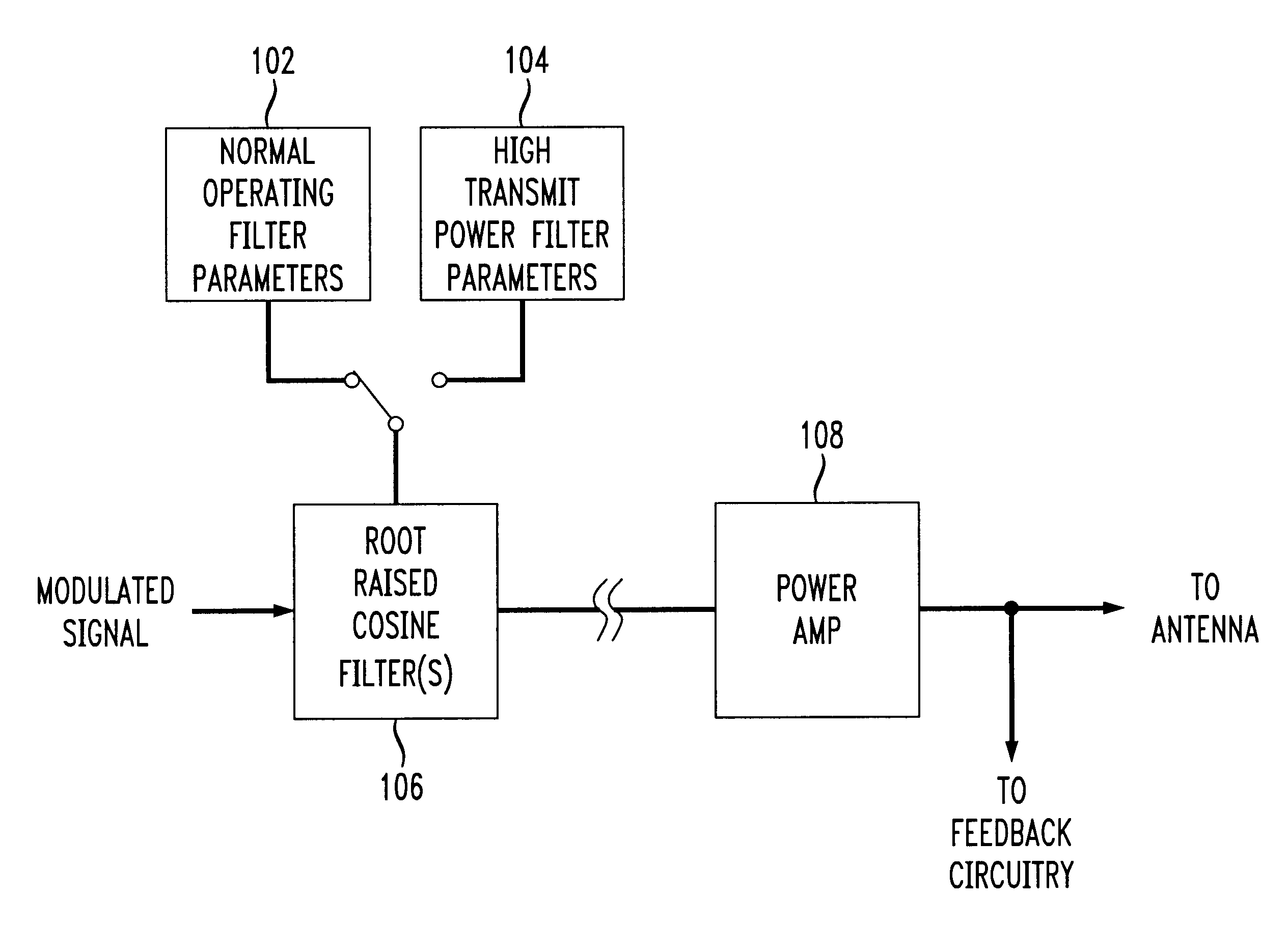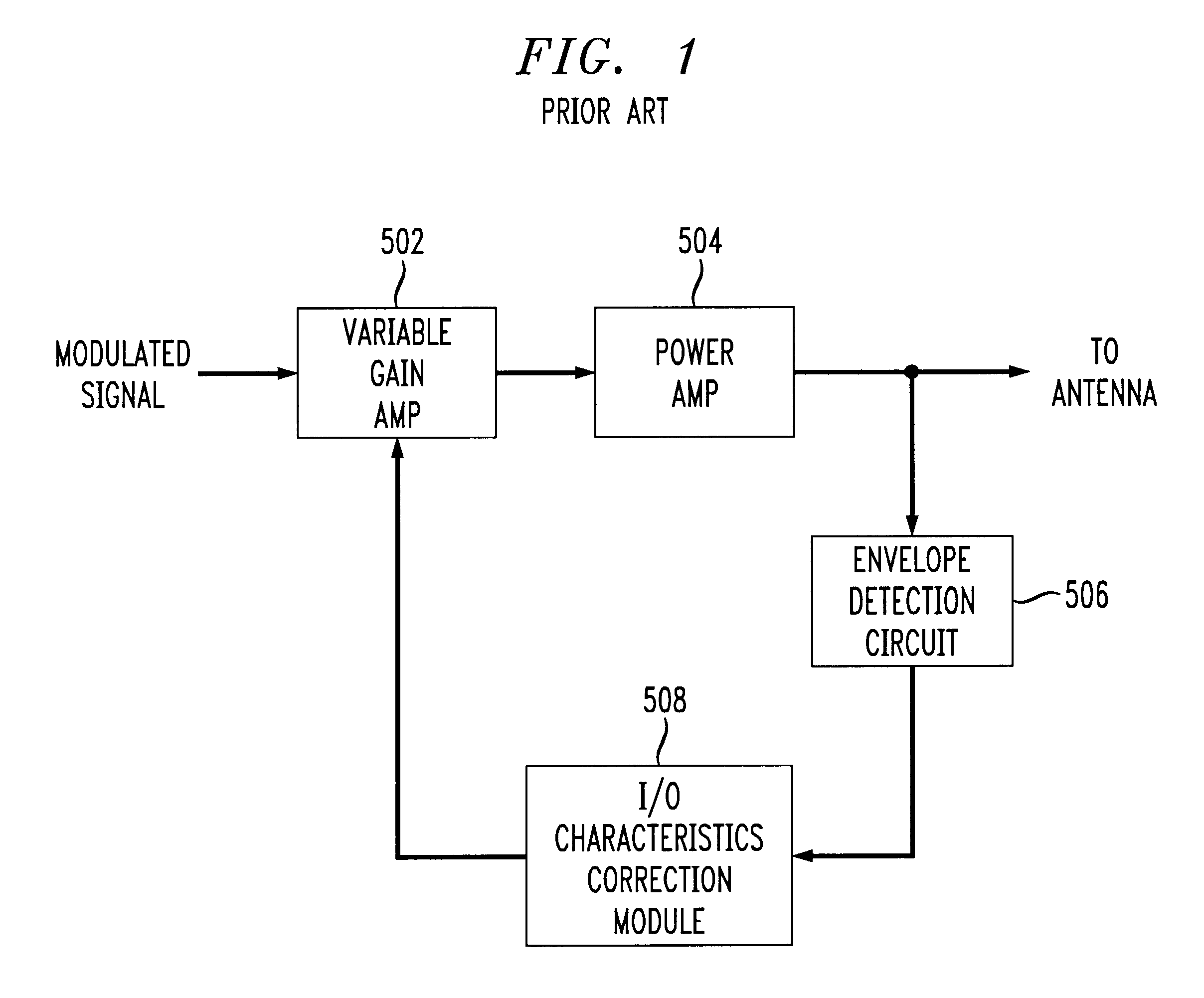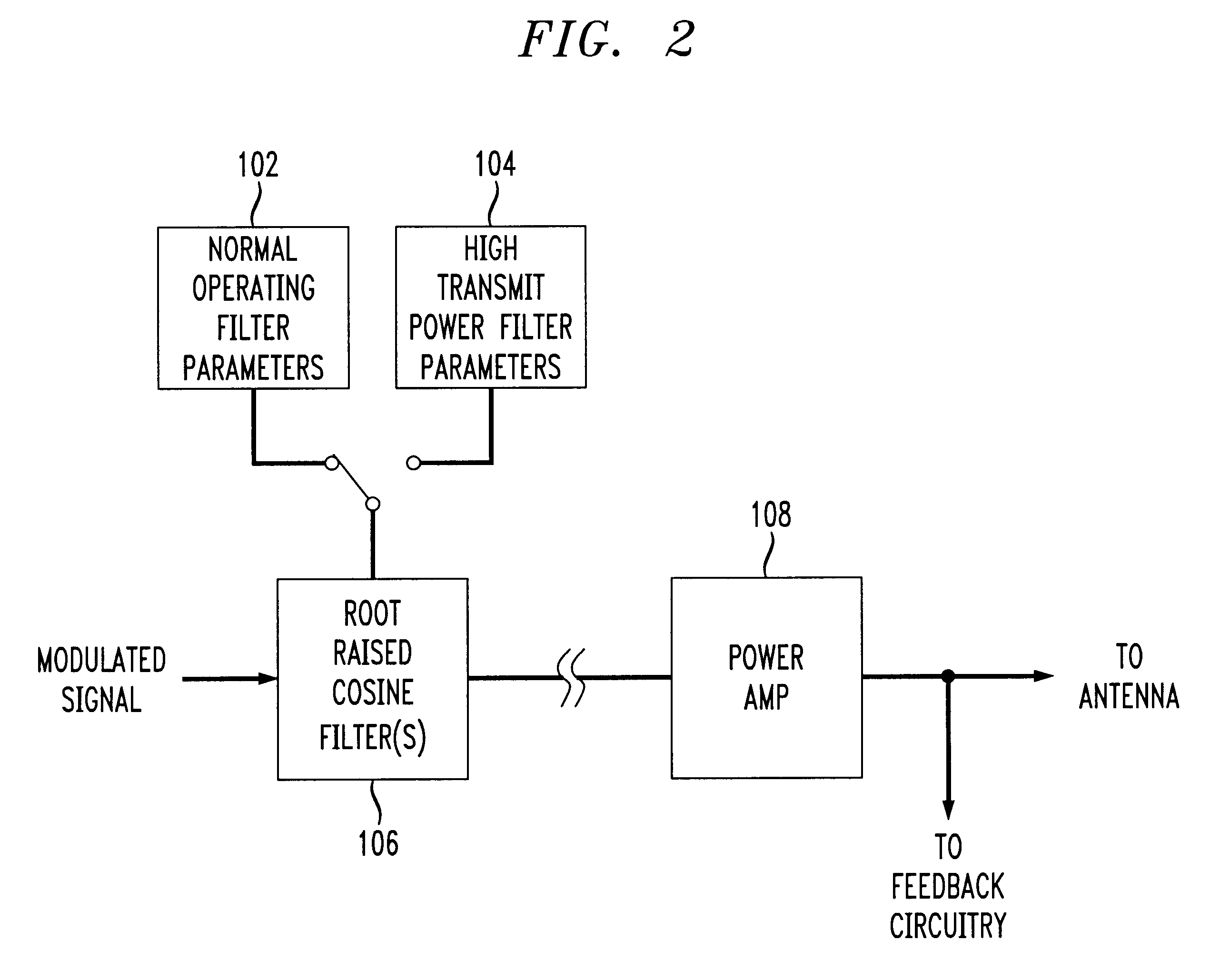Linearization of power amplifier
a power amplifier and linearization technology, applied in the field of wireless telephones, can solve the problems of increasing the cost and reliability of a wireless transmitter, and the conventional linearization technique has typically not been comprehensively tested for applications to class c amplifiers
- Summary
- Abstract
- Description
- Claims
- Application Information
AI Technical Summary
Problems solved by technology
Method used
Image
Examples
Embodiment Construction
The present invention provides a method and apparatus for linearizing a power amplifier intended for use in mobile telephones utilizing multiple access techniques, e.g., TDMA, CDMA, FDMA, etc.
The problem created by the distorted output signal is in spreading of its spectrum. The adjacent and alternative channels are especially vulnerable to it, since the result of the unwanted spectrum spread could not be filtered out for them. From the fundamental theory it follows that the spectrum spread to the adjacent and alternative channels happens only if the input signal is an amplitude-modulated one. For instance, according to the TDMA standard (IS-136), the input signal is indeed amplitude-modulated. The amplitude-modulation is done by the special Nyquist-type shaping of the input signal. The shaping is required to avoid Inter-Symbol Interference (ISI).
The measure of ISI for the transmitter is Error Vector Magnitude (EVM). The measure of linearity is Adjacent Channel Power (ACP). The TDMA...
PUM
 Login to View More
Login to View More Abstract
Description
Claims
Application Information
 Login to View More
Login to View More - R&D
- Intellectual Property
- Life Sciences
- Materials
- Tech Scout
- Unparalleled Data Quality
- Higher Quality Content
- 60% Fewer Hallucinations
Browse by: Latest US Patents, China's latest patents, Technical Efficacy Thesaurus, Application Domain, Technology Topic, Popular Technical Reports.
© 2025 PatSnap. All rights reserved.Legal|Privacy policy|Modern Slavery Act Transparency Statement|Sitemap|About US| Contact US: help@patsnap.com



